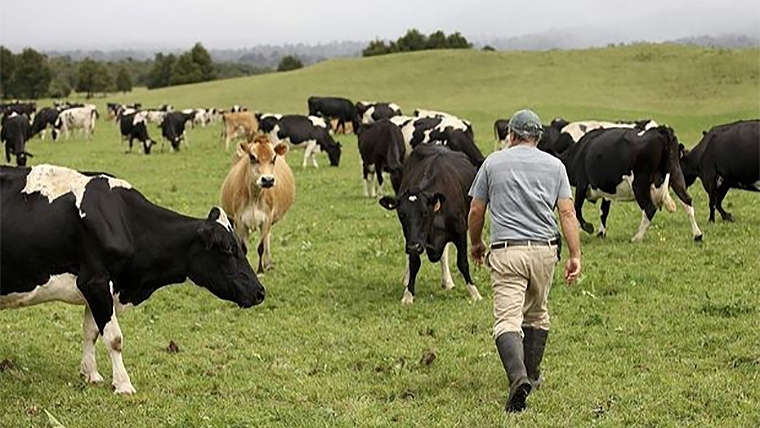
Content supplied by Rabobank
A fourth consecutive season of strong milk pricing is anticipated for New Zealand dairy farmers in 2019/20, with a farmgate milk price of NZD 7.15/kgMS forecast for the new season, according to a recently-released outlook report by agricultural banking specialist Rabobank.
For the current 18/19 season, Rabobank says modest upside is anticipated to the farmgate milk price, with this now expected to lift to NZD 6.65/kgMS.
In its seasonal outlook on New Zealand dairy, Fourth time lucky: Back in the black once more, Rabobank says stagnant global milk supply and robust global demand for Oceania-origin dairy products is expected to support strong milk prices for New Zealand farmers over the remainder of the current season and into next.

“Climatic conditions from 2018 have plagued milk supplies in the EU, Australia and Argentina, while inadequate milk cheques for US producers have kept milk supply below historical averages,” she said. “And these supply side factors will either take time or significantly higher prices to turn around.”
Ms Higgins said the slow-down in global milk supply growth had led to a recent substantial rise in the pricing of Oceania-origin dairy product.
“From December 2018 through to early April 2019, commodity dairy prices have jumped 24 per cent, with butter and skim milk powder the two products to shift the needle most significantly,” she said. “We expect these strong global prices to hold in the short term underpinning a rise in the current season forecast and a strong opening forecast for the 2019/20 season.”
Ms Higgins said while a new season forecast with a “seven in front” would be warmly welcomed by farmers, they would be wise to factor in some input cost inflation and budget accordingly.
“As the milk price lifts so too does price inflation for on-farm purchases and expenditure for fixed costs such as electricity, feed and wages. Lower freight costs and weaker global benchmark prices for fertiliser may help to combat inflationary pressure, however , where possible, a focus on cost control is advised.”
Key downside risks
The report says global demand risks pose the greatest threat to milk prices in the new season. Ms Higgins said dairy demand seems broadly robust, and in particular Chinese buying has remained strong for the first few months of 2019.
“But winter is coming. Uncertainty reigns over the wider demand picture for the new season – and the downside risks are mounting.”
“At present, many economists are using adjectives such as “fragile”, “delicate”, and “precarious” to describe the global economic growth over the next 24 months, and Rabobank itself is expecting a US recession for the latter half of 2020. Weakening Chinese company profits are a further concern and do not bode well for the Chinese economy – or arguably for dairy import demand.”
The report says geopolitical tensions also continue to simmer and while trade tensions between New Zealand and China may be temporarily relieved, the US and China are yet to formalise any potential trade deals to ease theirs and the Brexit ‘divorce’ only adds to the mix.
“We are cautious that the risks are skewed to the downside over the second half of 2019, and squarely focused on the affordability of dairy in an environment of weaker economic growth and rising retail prices,” Ms Higgins said. “Should the demand picture deteriorate more quickly than anticipated, we expect the milk price to moderate across the course of the season to end within a lower range between $6.50/kgMS and $6.80/kgMS.”
Slower NZ milk production
Following exceptional weather conditions across the second half of 2018, the report says New Zealand milk flows were 4.4 per cent ahead of the previous season to the end of January 2019.
Since then, seasonal dry conditions have hit the majority of the North Island, with a particular intensity in the Waikato region, and milk production has now stalled with February milk flows barely matching last year’s volumes.
“With the dry conditions turning severe in some places, herds are now being dried off for the season, and there is now a strong risk that milk production finishes abruptly from March 2019,” Ms Higgins said.
“We have now revised lower our expectations for milk collections for the 2018/19 season and now anticipate growth of three per cent year-on-year.”
Looking forward to the new season, the near-perfect production conditions in 2018/19 are unlikely to be repeated and milk flows are not expected to keep pace with the previous season.
“The current season has been an anomaly in an era of slower production growth with the compound annual growth rate across the last five completed seasons barely moving 0.1 per cent,” Ms Higgins said. “With most key on-farm decisions such as fertiliser use and stocking rates remaining largely the same, the magnitude of disruptive weather will determine how sharp the decline in flows will be. We anticipate 2019/20 season milk production to be down at least one per cent year-on-year.”
We welcome your comments below. If you are not already registered, please register to comment
Remember we welcome robust, respectful and insightful debate. We don't welcome abusive or defamatory comments and will de-register those repeatedly making such comments. Our current comment policy is here.